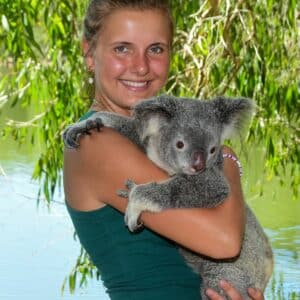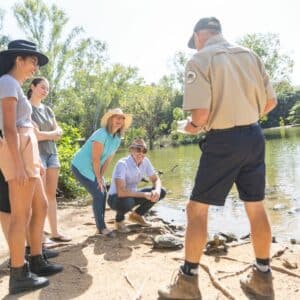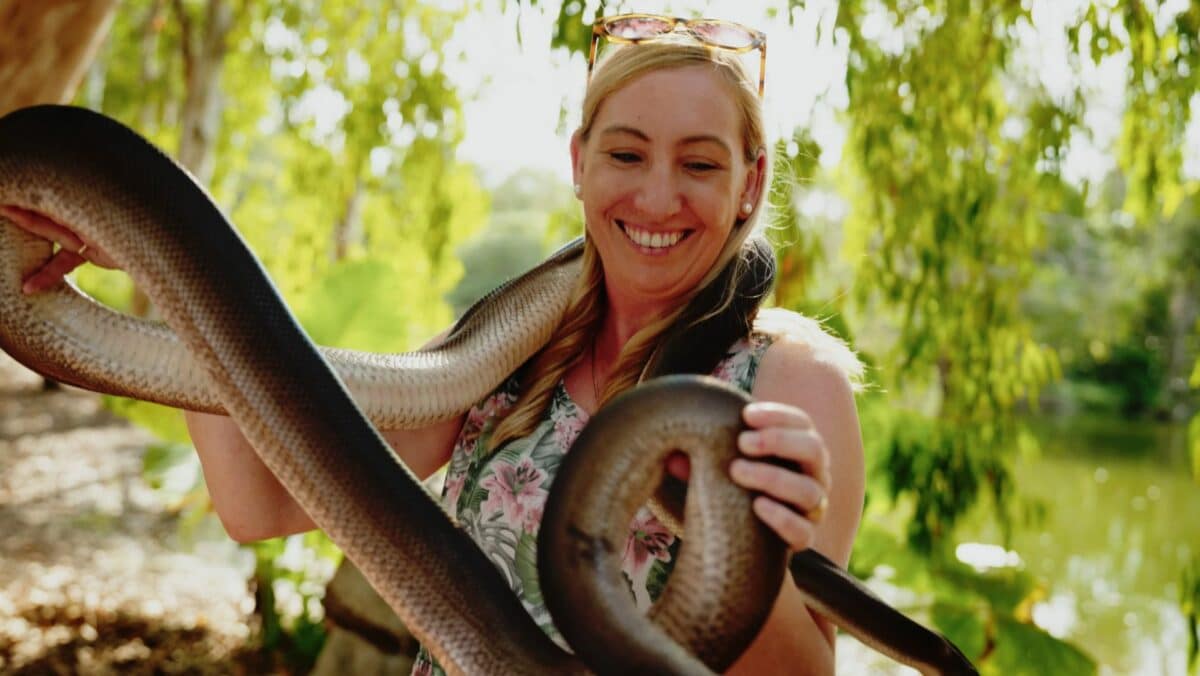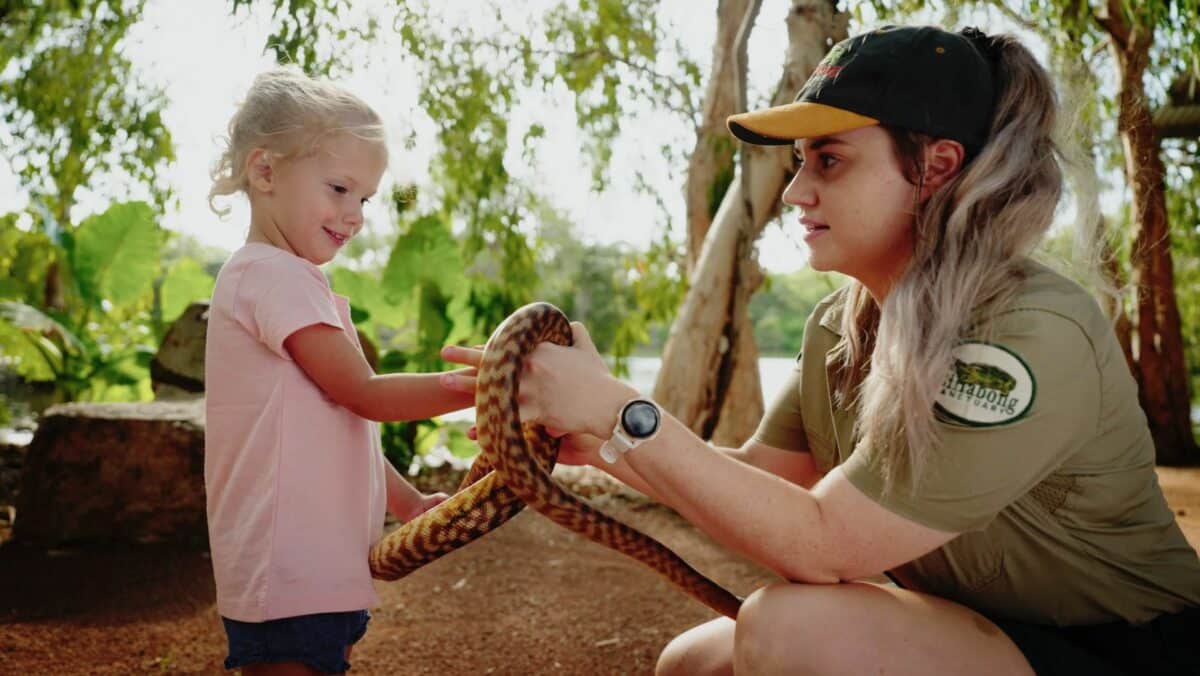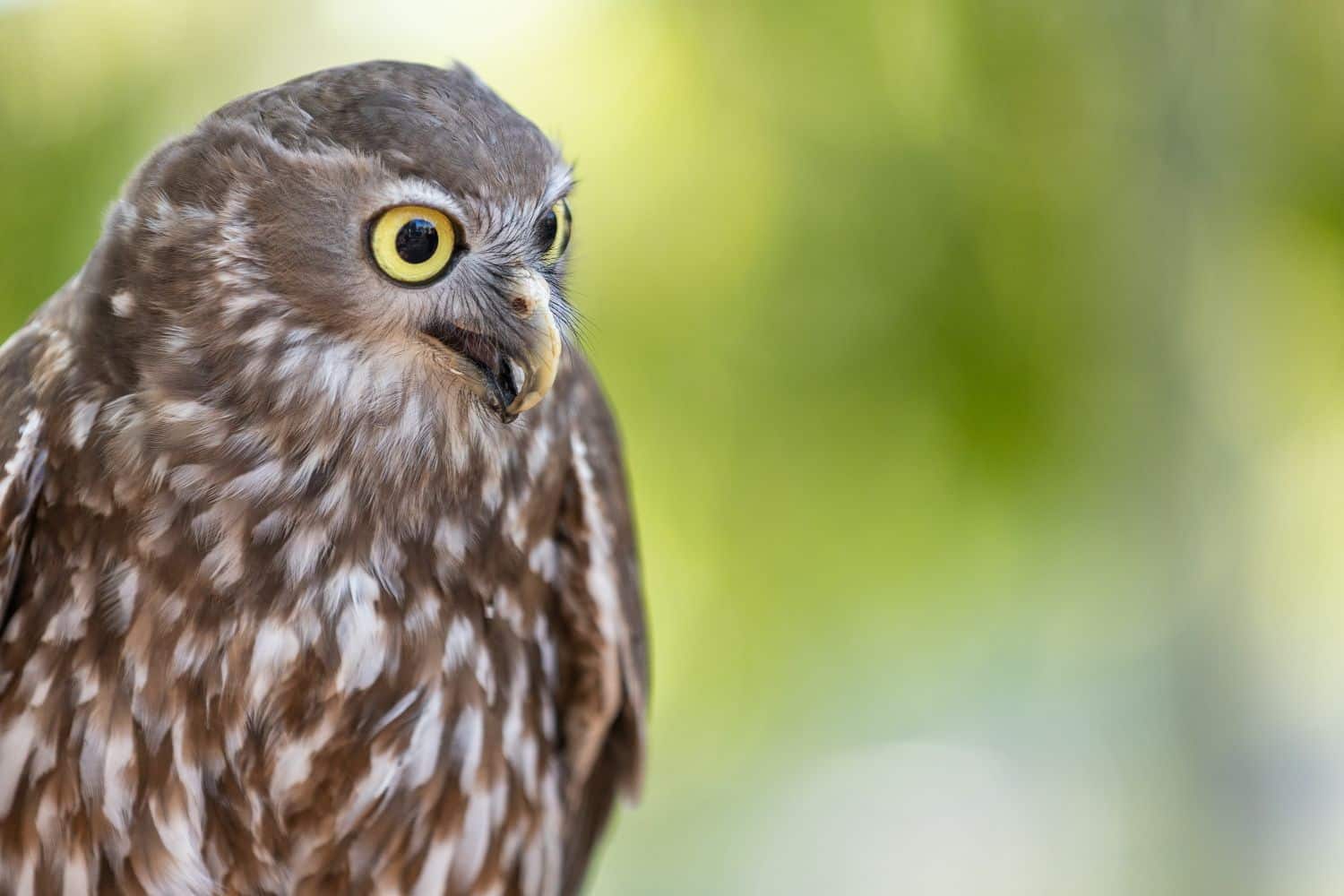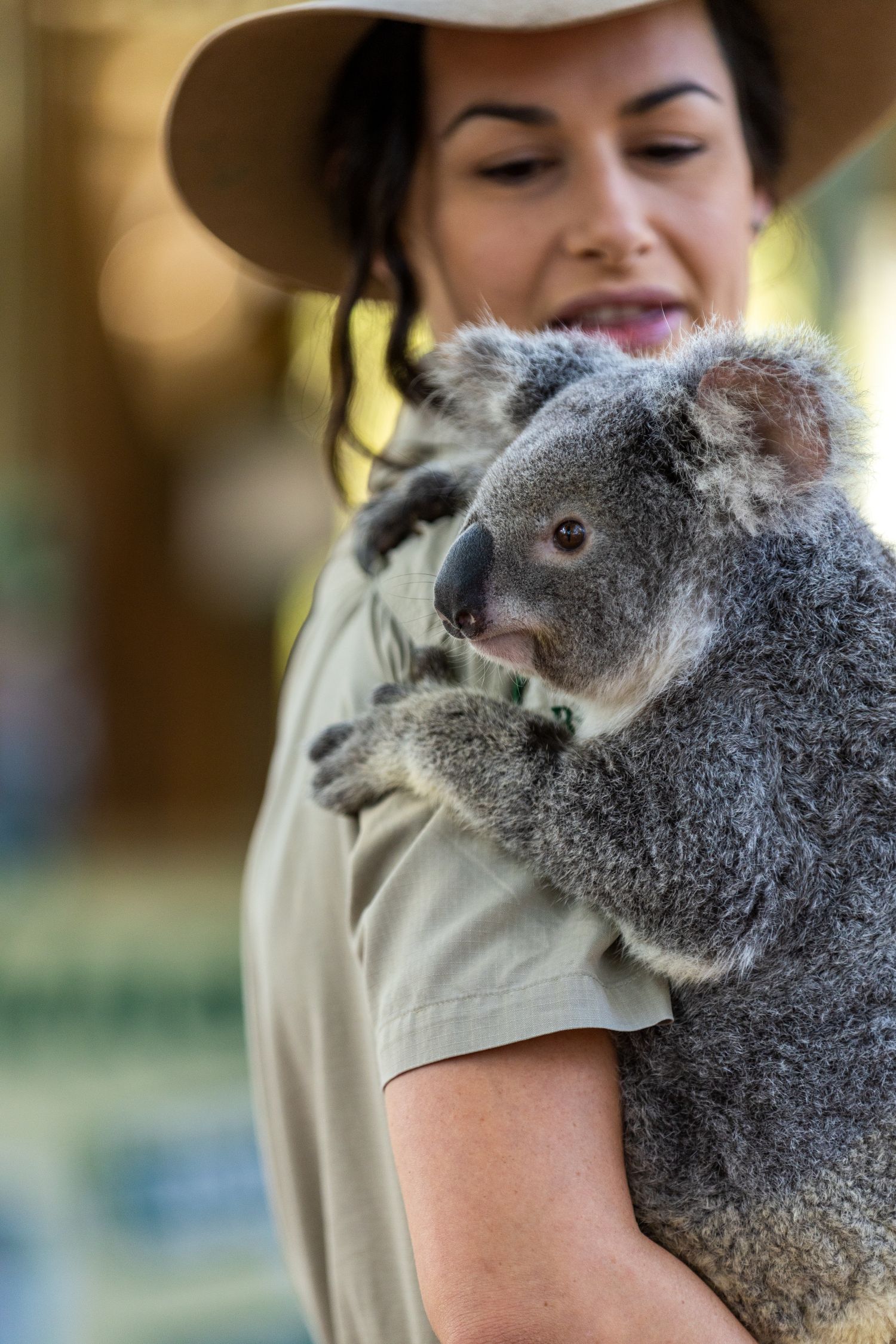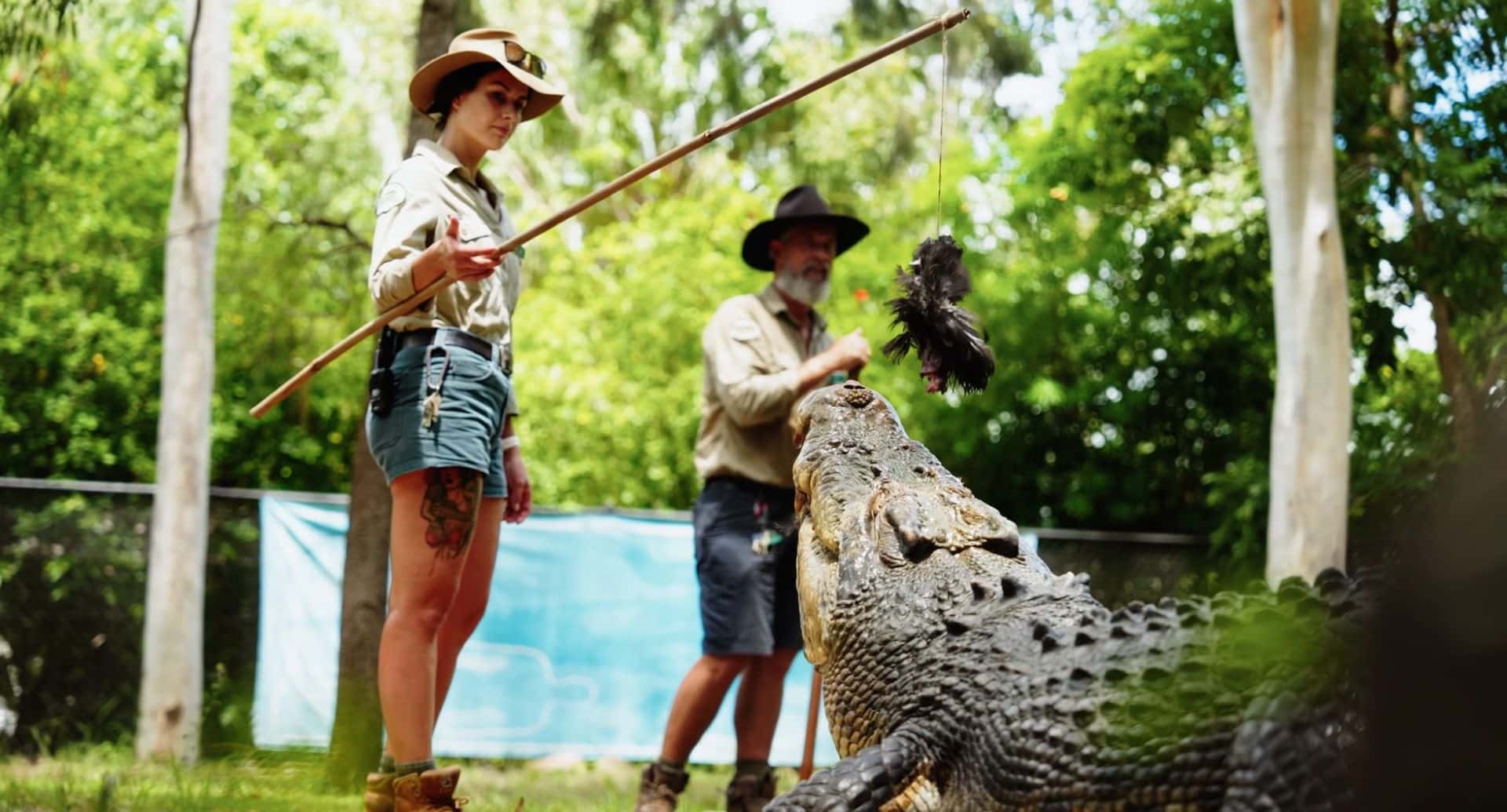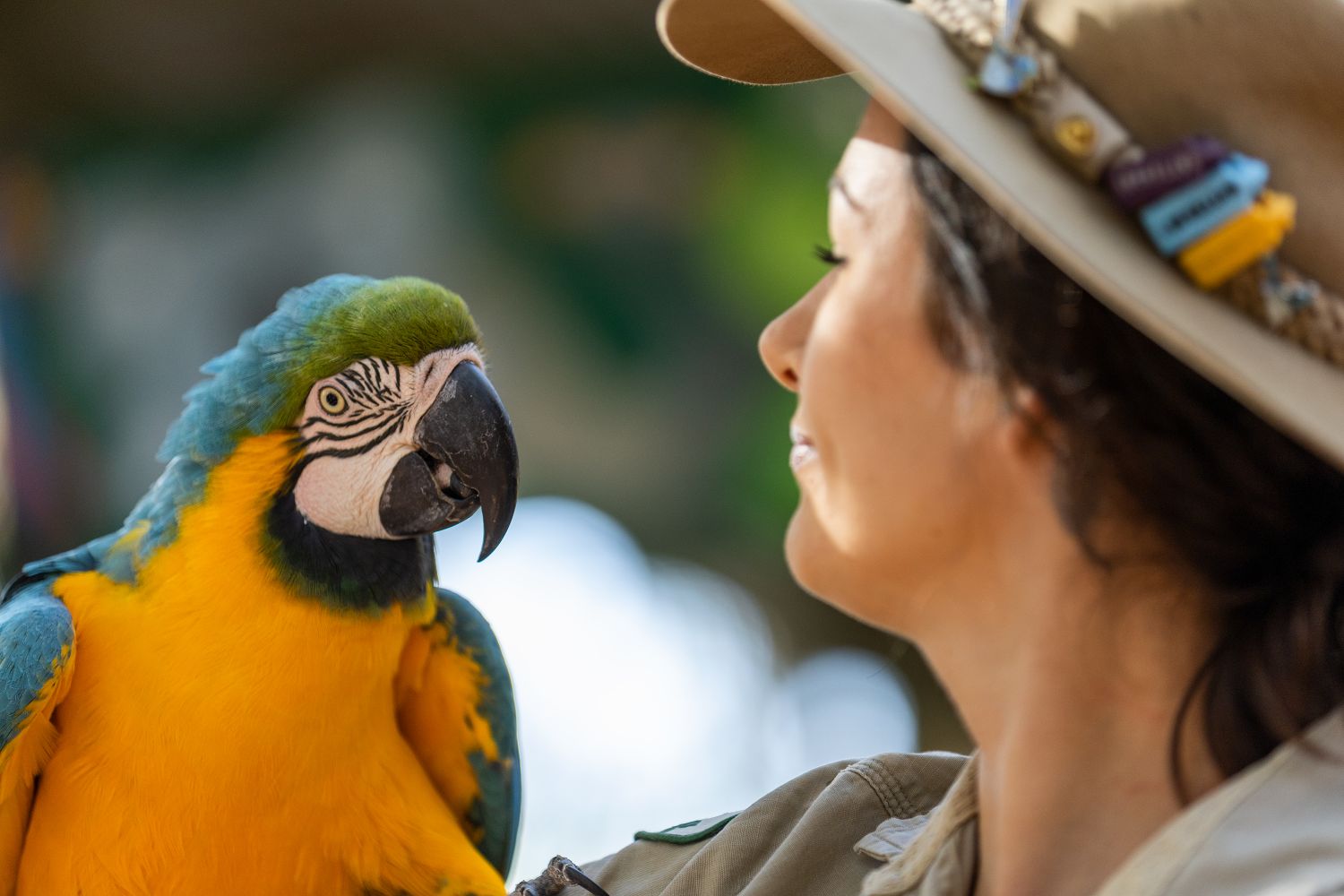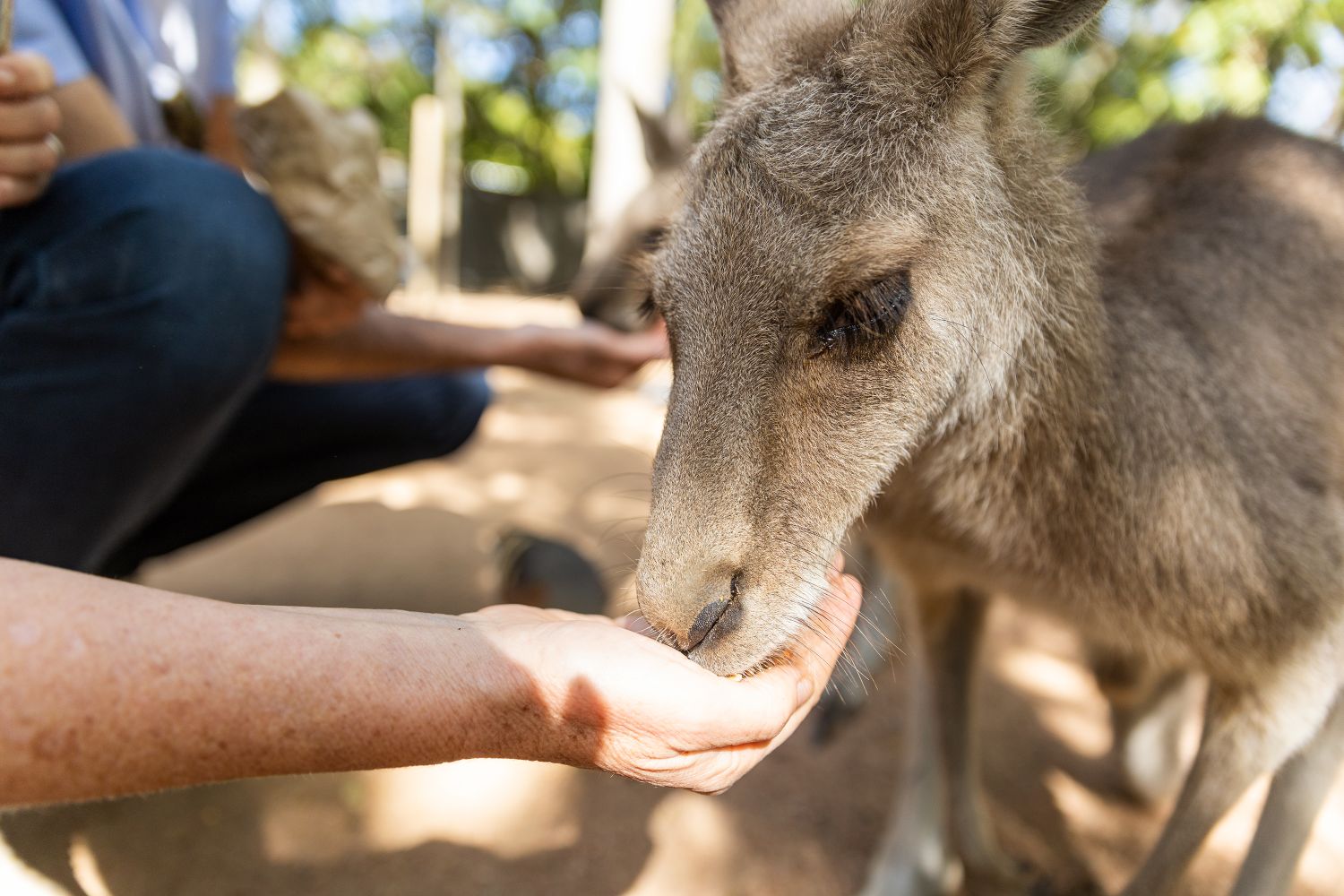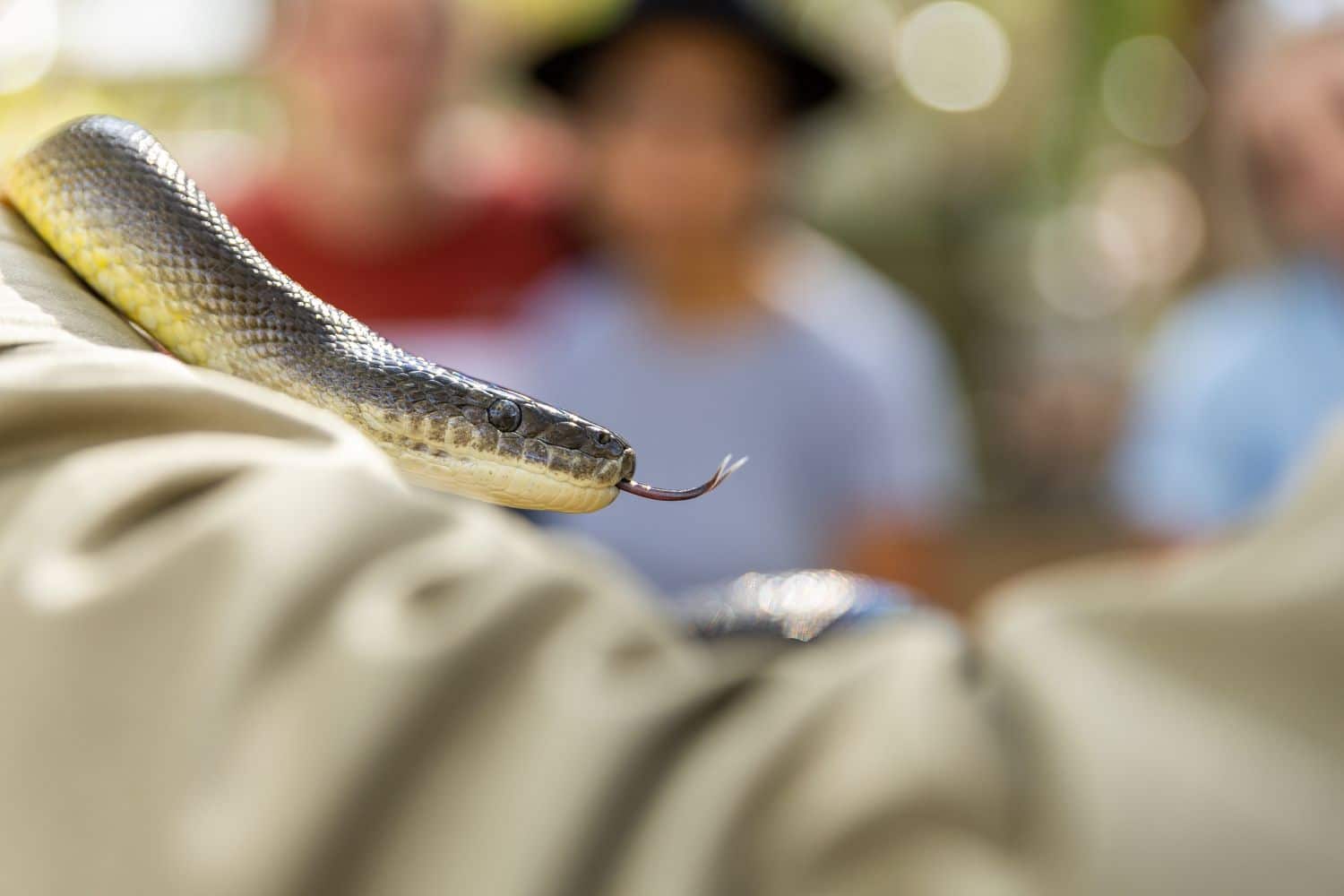GENERAL ADAPTATIONS FOR HUNTING AND FEEDING
Pythons are non-venomous snakes which are generally heavily-built, muscular and slow-moving. The python family includes the largest snakes in the world.
Most species have a broad head distinct from the neck, and heat-sensing pits along the lips. These specialised organs are capable of detecting tiny differences in temperature, and allow the snake to hunt down warm-blooded prey, namely mammals and birds.
Although pythons are non-venomous, they all have sharp, backwards-pointing teeth.
When hunting, pythons strike their prey, grasp it in their strong jaws, then immediately throw the coils of their body around the victim. As the animal struggles, the snake progressively tightens its hold until the animal suffocates. Killing is entirely by constriction, not by crushing or poisoning. Having killed its prey, the python then nudges it into position with its snout and swallows the entire animal headfirst.
Pythons have no means of ripping apart their food, so they have to be capable of swallowing animals several times bigger in diameter than their own heads. Imagine trying to swallow a watermelon whole! The head of the python has remarkable adaptations to enable it to perform similar feats.
The two halves of the lower jaw are not fused in the middle, but are held together by flexible muscles and ligaments. This allows them to stretch far apart as the animal is swallowing.
The upper and lower jaw do not ‘unhinge’ as is commonly believed. Instead, the food passes below this joint along the bottom of the neck, which can stretch enormously around the prey animal.
In order to move the food along, the snake grips it with the fangs on alternate sides of the jaw, moving one side of the jaw and then the other along the prey, passing it down its throat. During this process it produces a lot of saliva to lubricate the prey as it moves along.
The ribs of a python are not anchored to its sternum (as in other animals) so the tips of the ribs can stretch apart as the food moves on down the snake’s body.
The skin of pythons is also very stretchy, with relatively small scales. This enables the body to expand as the food item is swallowed.
It can take several hours to swallow a large animal.
The ability to swallow very large food items means that a big snake need not spend all its time hunting. It may need to eat only a few meals every year. After eating large prey, it will usually spend much time basking in the sun to maintain a high enough body temperature to digest the meal.
There are also a couple of potential problems to swallowing such a big meal.
Firstly, if the temperature is not warm enough to allow complete digestion, the food animal may decompose in the python’s stomach and poison it.
People who keep caged birds as pets are familiar with a second difficulty: Imagine going to uncover your birdcage in the morning and finding a fat Carpet Python curled up inside instead of your prized budgie or lorikeet! The snake has crawled in through the bars of the cage and then, after swallowing its meal, become too big to squeeze back out again.
REPRODUCTION
Pythons are oviparous, or egg-laying snakes. The eggs are oval, with a leathery shell, rather than a hard shell like birds’ eggs. This allows the exchange of gases and moisture between the embryo and the outside air. The female pushes the eggs into a mound, and coils around them to protect them. Some species will actually ‘shiver’ while incubating; that is, the female rhythmically contracts the muscles of her entire body to raise her own temperature and help keep the eggs warm.
The incubation period depends on temperature, and varies with different species, but is usually 10 to 14 weeks. Like many other reptiles, the young have an egg-tooth on the end of their snout, which they use to break through the eggshell. This tooth is lost when they shed their skin for the first time.
Once hatched, the young are completely independent of their parents.
BLACK-HEADED PYTHON (ASPIDITES MELANOCEPHALUS)
The Black-headed Python is a robust snake, growing up to 3 metres (10 feet) in length. The glossy black colour of the head, neck and throat is the most obvious identifying feature. There is no distinct narrowing of the neck region as in most other pythons. This snake also lacks heat-sensitive pits along the lips. The back is light to dark brown with darker cross-bands, while the belly is a creamy colour, often with dark blotches.
These pythons are found in a wide variety of habitats throughout the northern half of Australia.
Typically nocturnal, they may become active during the day in cooler weather, especially during or after rain storms.
When disturbed, the black-headed python will usually retreat to the safety of nearby shelter; however, if provoked it may rise up and hiss loudly to scare off potential predators.
This snake feeds on small mammals, birds, and reptiles, including venomous snakes.
Like the other Australian pythons it is an egg-layer, producing about 10 eggs per clutch, and incubating them till they hatch. The young are about 510mm (20 in) long. Lifespan may be more than 20 years.
Here at Billabong Sanctuary you may meet one of our Black-headed Pythons during the morning Python Experience show.
CHILDREN’S PYTHON (Antaresia childreni)
The name Children’s Python does not really mean that these are pythons for children. They were named after JG Children, an English naturalist. They do make good pets, however, because of their small size and placid nature.
Children’s Pythons are typically brown with smooth-edged darker brown blotches along the length of the back. The belly is creamy in colour.
The average length is 75cm (29.5 in), and they rarely grow larger than a metre (39 in). Much larger specimens have sometimes been seen in the wild.
These beautiful little pythons are most commonly found in Queensland, Northern Territory and Western Australia, but they also live in the northern parts of New South Wales and South Australia.
Children’s Pythons are nocturnal and live on the ground, but they are also very good climbers, and may be found in rock outcrops and caves where they hunt small insectivorous bats. The python waits at the entrance to the cave where bats are roosting till the bats fly out in the evening. It then catches a bat as it flies past, suffocates and eats it on the spot, clinging to the rocks with its strong tail.
They also eat other small mammals, frogs, lizards, rodents, and small birds. They are often found around houses, where they should be welcome visitors. Harmless to people, they are useful hunters of mice and other pests.
Mating occurs in spring. The female lays a clutch of up to 15 eggs at the beginning of summer, and incubates and defends them until they hatch. Hatchlings are about 250mm (10 in) long. Lifespan may be up to 20 years.
WATER PYTHON (Liasis fuscus)
You may meet a Water Python during one of the daily snake talks here at Billabong Sanctuary. Even if you come to the presentation convinced that you are terrified of ‘vicious, slimy snakes’, chances are you will be won over by this python’s docile nature. After reaching out to feel its sleek, dry scales, you’ll be lining up to have your photo taken with your new friend.
As its name suggests, this python is found around freshwater billabongs, streams, lagoons and swamps in coastal regions of northern Australia. If threatened, it will take to the water.
The Water Python is a uniform dark blackish brown to olive-green on the back, with smooth, iridescent scales. The belly is dull to bright yellow. Averaging about 2m long (6.5 ft), adults can grow up to 3m (10ft). It has the typical python body form, with a head distinct from the neck, and a robust body.
This python is nocturnal and eats mammals such as water rats, as well as water birds and their eggs, and reptiles such as baby crocodiles.
Clutch size is up to 22 eggs; hatchlings are about 44cm long (just over 17 in).
AMETHYSTINE PYTHON (Morelia amethystina)
Also known as the Scrub Python, this is Australia’s longest snake, reaching over 8m in length (26 ft)! Here at Billabong Sanctuary, you can get up close to these magnificent reptiles.
The scales of the Amethystine Python have a milky, iridescent sheen, similar to a polished amethyst. The scales along the back are olive-yellow or olive-brown, with dark brown or black cross-bands. The belly is white or cream in colour. The head is distinct from the neck, and the body is long and slim.
This python occurs only in northeastern Queensland and on islands of the Torres Strait, in a variety of habitats including rainforest, open woodland, mangrove swamps, and even scrubby vegetation on coral cays.
Amethystine Pythons are mostly nocturnal. Younger snakes live in trees, but older adults tend to be terrestrial. In spite of their relatively slender body, large Amethystine Pythons can eat animals as big as wallabies and feral pigs. More often, smaller mammals such as bats and possums are taken, as well as birds.
The clutch size is about 20 eggs, and hatchlings are about 600mm (23.5 in) long.
THE CARPET PYTHON GROUP
Two subspecies of Carpet Pythons have distinctive colour patterns, except where they occur together and interbreed. One is simply known as the Carpet Python; the other, the Diamond Python, is actually a colour variant of this species. Here at Billabong Sanctuary you can see individuals of both of these very pretty snakes.
Carpet Python (Morelia spilota variegata)
Like Children’s Pythons, these snakes adapt readily to being handled, and make docile pets. You may get up close and personal during the morning Python Experience at Billabong Sanctuary.
This subspecies is typically pale to dark brown, with irregular blackish, light-centred blotches all along its back. This pattern has been compared to that of a Persian carpet. The belly is cream or yellow with darker blotches. The average length is about 2m (6.5 ft) but individuals can reach over 4m (13 ft).
This python is found from southern South Australia, through most of Queensland and New South Wales, around the top end to the Kimberleys in Western Australia. It lives in a variety of habitats, from rainforest to semi-arid coastal areas, avoiding the very hot dry country in the interior.
Carpet Pythons may live in burrows made by other animals, but are mostly arboreal. They may be seen high in the canopy of trees, where their presence is signalled by the raucous squawking of nearby lorikeets, honeyeaters and other birds.
They tend to be active at night, when they prefer to lie in ambush rather than actively hunt their prey.
Carpet Pythons are welcome in sheds of cane farmers and other property owners, because they are such efficient predators of pests such as rats.
They also eat a variety of other invertebrates, mainly mammals and birds, but occasionally other reptiles as well.
Clutch size may be up to 47 eggs. Hatchlings are about 300mm long (12 in) and weigh about 15gm (1/2 oz).
DIAMOND PYTHON (Morelia spilota spilota)
This subspecies is glossy olive-black above, with cream or white-coloured spots clustered in diamond patterns along the body. The belly is cream or yellow with dark blotches. The average length is about 2m (6.5 ft) with a maximum of just over 4m (13 ft).
Diamond Pythons are found only along the coast of New South Wales.
They are mainly nocturnal ambush hunters, lying in wait either in a tree or on the ground for birds, mammals or other reptiles.
In springtime, the female lays a scent trail as she moves around. Several males will follow this trail and mate with her, so that eggs in a clutch often have different fathers.
Up to 50 eggs may be laid. Newly hatched young are about 300mm (12 in) long and weigh only 15gm (1/2 oz).
OLIVE PYTHON (Liasis olivaceous)
Another star attraction at the morning handling shows, these pythons also make popular pets, as they adapt well to handling.
The Olive Python is a uniform fawn to dark olive-brown colour above, with a white or cream-coloured belly. Average length is about 2.5m (8 ft) with a maximum of about 4m (13 ft). It does not grow as long as the Amethystine Python, but is Australia’s heaviest snake.
This very large, robust snake is found in the coastal regions and inland areas of north-western Western Australia eastwards to western Queensland. It lives in all kinds of forest habitats, from rainforest to savannah woodlands, but prefers rocky hills and gorges, especially those close to watercourses.
Hunting mainly by night, it eats small mammals, birds and reptiles.
The usual clutch size is about 15 to 18 eggs, but snakes in captivity have been known to lay as many as 24 eggs. Hatching occurs in 71 days, with the young measuring 375mm (nearly 15 in). By the time they are one year old, they may be nearly 2m long (6 ft).
WOMA (Aspidites ramsayi)
This snake is seldom encountered in the wild because it lives far from populated areas, but here at Billabong Sanctuary you may get a close look at this very interesting python.
In this species, the head is not distinct from the neck. The Woma varies in colouration from grey to olive to reddish brown above, with darker, narrow cross-bands. The belly is cream to yellow, with pink or brown blotches. The average length is 1.5m (nearly 5 ft) with a maximum of about 2.7m (8.8 ft).
The Woma is found in the very dry inland regions of all Australian states except Victoria and Tasmania. Here it shelters in hollow logs, animal burrows or thick vegetation.
Also known as the Sand Python, it has an unusual method for killing its prey. Because it does much of its hunting down burrows, there is not enough room to coil around its victim to suffocate it. Instead, it squashes the victim against the wall of the burrow to crush it.
The Woma may also lure its prey by wriggling the end of its tail, as Death Adders do. Like other pythons, it eats small mammals, birds and reptiles.
Because it lives in such remote, inhospitable areas of the continent, little is known about its reproductive biology. Perhaps someday we will have Woma breeding here at Billabong Sanctuary, and then we will be able to add our observations to the study of this intriguing reptile.


